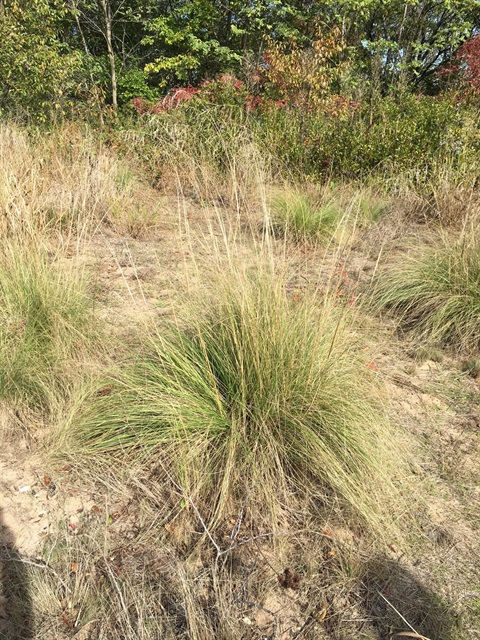
It's week three of Council's Weed of the Week series for the 2024/25 spring and summer season. This series of articles provides our community with information and advice on new, emerging and established invasive plant species threatening our region.
Whether you're living on the land, living in town, or just passing through – we all have a part to play in protecting our natural environment and agricultural land from invasive plants and weeds.
This week we look at one of the most invasive weeds in our region: African lovegrass.
African lovegrass (Eragrostis curvula) is a perennial grassy weed native to southern Africa that dominates pastures around the world – including in the Snowy Monaro.
African lovegrass invades both native and introduced pastures, quickly dominating a pasture if not actively managed. Accidentally introduced into Australia sometime before 1900, its distribution has rapidly expanded since. Recent decades have seen a notable expansion to the size of the affected area, particularly since 2020 where above-average summer rainfall saw plants constantly germinating and seeding under ideal conditions.
African lovegrass thrives on acidic, sandy soils with low fertility. It is heat, drought and frost tolerant. Owing to its long winter dormancy and low digestibility, African lovegrass has little value as pasture in our region. Animals avoid grazing it over winter, resulting in overgrazing of a pasture's other plant species. This allows African lovegrass to readily establish itself as the dominant pasture species in affected areas.
African lovegrass grows prolifically in summer, creating a dense thatch of highly flammable dry material. This poses a major fire hazard, effectively extending the fire danger period to 12 months of the year where African lovegrass is present.
To reduce the chance of African Lovegrass establishing:
- Ensure that you can positively identify plants at all growth stages
- Maintain strong, competitive pastures and avoid unnecessary soil disturbance
- Avoid introducing livestock, equipment and fodder from unknown sources
- Monitor vehicle parking areas and livestock feeding areas for new germinations
- Quarantine new stock in an area that can be easily monitored and treated for germinating plants
- Clean vehicles, mowers and machinery before introducing them to your property
- Revegetate bare ground and disturbed areas
To contain infestations on your property:
- Restrict animal and vehicle movements from infested paddocks into clean paddocks
- Treat mature plants to minimise seed production
- Monitor treated areas for new growth – seeds can remain viable for up to 17 years
- Monitor and treat seedlings, particularly around summer storm periods – untreated plants will rapidly mature and produce viable seeds
- If you have very few plants, consider removing and destroying the seed heads before digging out or spraying
To manage heavy infestations on your property:
Consider what control methods are most appropriate to your situation:
- Boom spraying and pasture renovation strategies are most effective at managing heavy infestations on arable land and provide valuable winter grazing opportunities for farmers. Biodiversity legislation may need to be considered.
- Strategic, heavy grazing can reduce seed production and fire risk. Infrastructure, animal health and supplementary feeding requirements should be considered.
- Slashing or mowing can significantly reduce fuel loads around houses and buildings to manage fire risk.
- Controlled burning can be very effective at removing dense African lovegrass thatches prior to pasture renovation, or as an interim fire mitigation strategy –burning should only be performed by experienced operators and under the guidance of the Rural Fire Service.
- Manage infestations near boundaries to minimise spread to neighbouring land. Be a good neighbour.
What are my lawful control requirements?
African lovegrass is no longer specifically regulated under Biosecurity legislation. The NSW Weed Risk Management framework has identified that while African lovegrass and other local priority weeds continue to pose a high risk to the economy, environment and community, they are so widespread that the cost of maintaining a program of regulatory intervention is too high for the community to sustain.
Under current legislation land managers are afforded the opportunity to determine how best to manage African lovegrass on their land, based on their individual circumstances.
As with all weeds, prevention is the best control option. Maintaining a vigorous perennial ground cover at all times will inhibit the establishment of African lovegrass.
Council is here to help. If you have questions about African lovegrass, or any other weeds on your property – contact our specialist biosecurity officers for advice and assistance.






